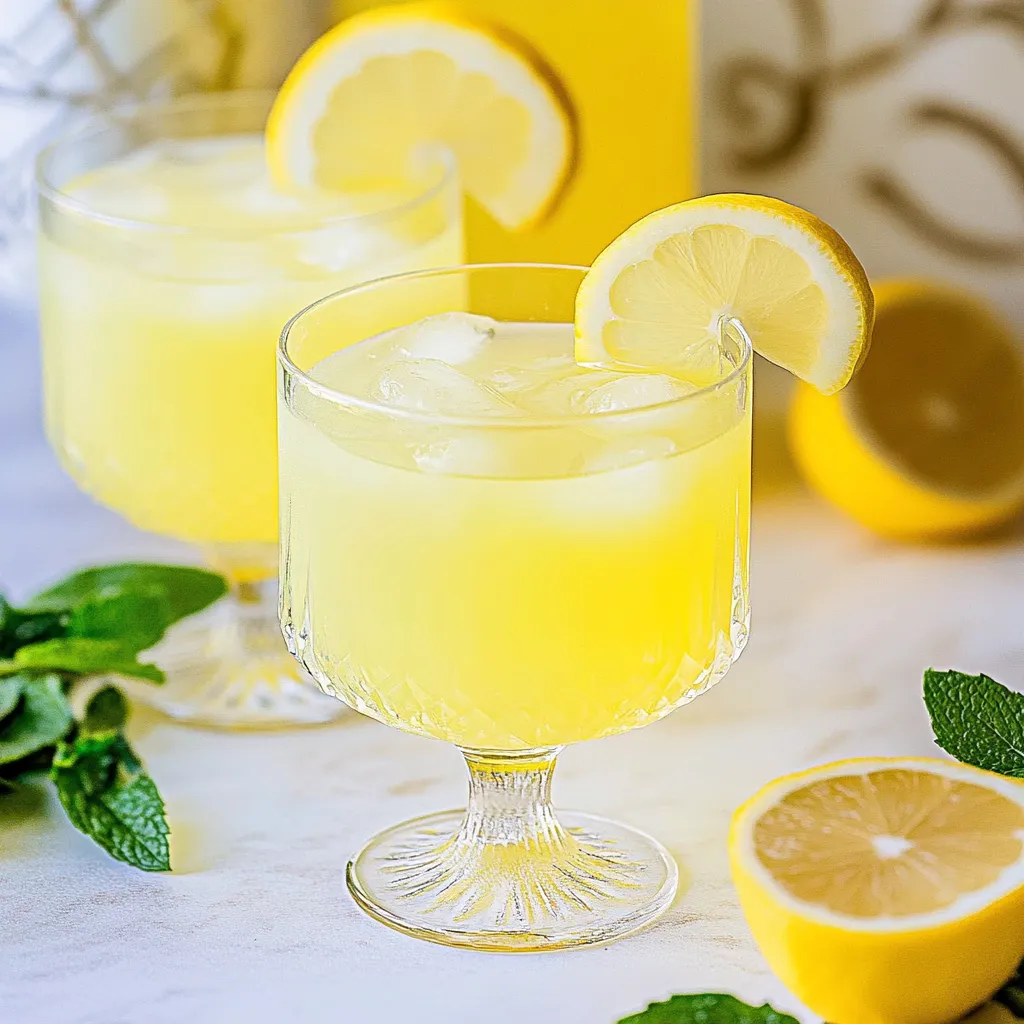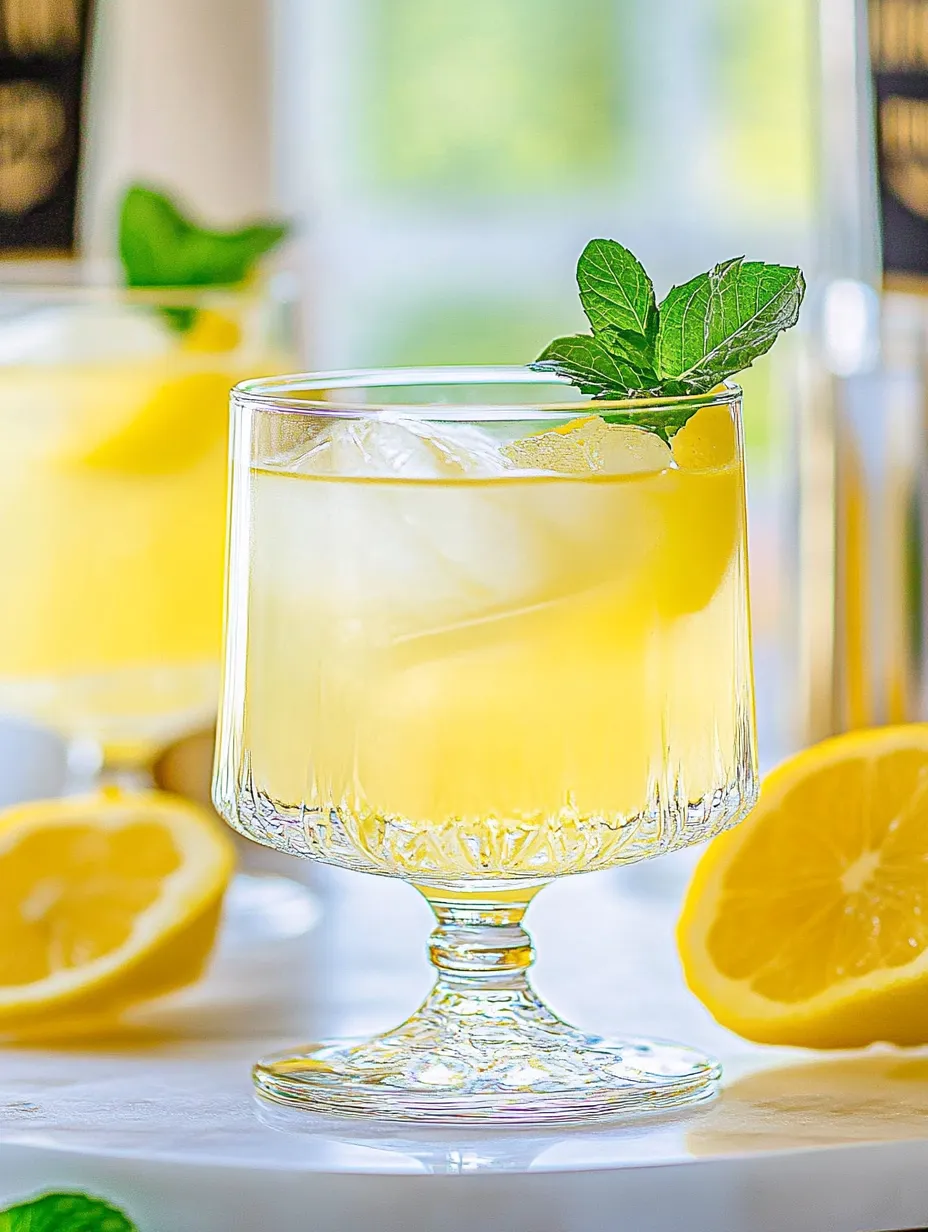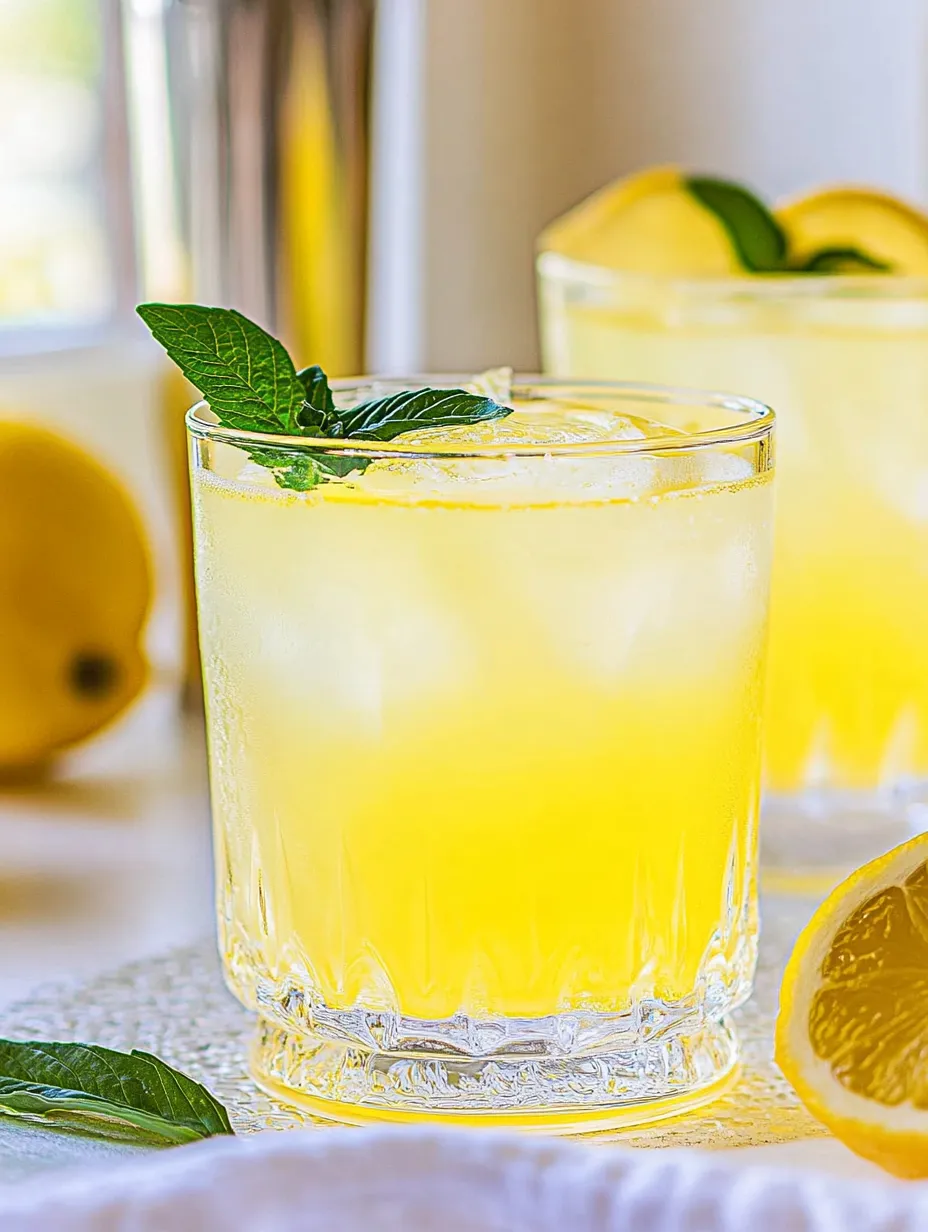 Save
Save
I stumbled across this homemade limoncello recipe during a post vacation blues moment after returning from Italy's Amalfi Coast. I was desperately trying to recreate that magical lemon elixir I'd been sipping on sun drenched terraces overlooking the Mediterranean. After some research and experimentation, this recipe became my little piece of Italian sunshine at home.
My neighbor, who typically drinks beer exclusively, took one sip of this and declared, "This doesn't even taste like alcohol!" before proceeding to polish off three small glasses. When someone who claims to "hate fruity drinks" asks for your recipe, you know you've struck gold.
What Goes In The Bottle
- Organic lemons: The absolute stars of the show
- Everclear: The high proof workhorse that extracts all that lemon goodness
- Sugar: Balances the tartness and alcohol bite
- Water: Dilutes the potency to a civilized level

Limoncello Magic Method
- Lemon Peel Perfection
- The magic of limoncello lies in the oils from the lemon peels, so how you peel them matters enormously. I use a potato peeler rather than a zester because it gives larger pieces that are easier to strain later. The key is removing just the yellow part while leaving behind as much of the white pith as possible that stuff is bitter and will ruin your batch. I hold each lemon in my left hand, rotating it as I peel with my right, working in long, shallow strokes. If you see white pith on your peels, gently scrape it off with a small knife.
- Alcohol Selection Strategy
- Everclear is ideal because its high alcohol content extracts the lemon oils more efficiently. Think of it as a solvent that pulls all that aromatic goodness out of the peels. If you use one hundred proof vodka instead, the process will take longer add at least another week to your infusion time. Whatever you use, don't waste money on top shelf stuff the lemon will overwhelm any subtle qualities in premium spirits.
- Infusion Patience
- This is where most people go wrong. You cannot rush good limoncello! The daily shaking is crucial I set a reminder on my phone so I don't forget. Think of it as briefly waking up the mixture to make sure all the peels get their turn bathing in the alcohol. I've found that three weeks is the sweet spot for my taste, but I start tasting (just a tiny bit!) at the two week mark to monitor the progress.
- Sugar Syrup Secrets
- The way you make the sugar syrup impacts the final texture. Heat the water and sugar together, stirring constantly until completely dissolved, then allow it to cool completely before adding to the lemon infusion. If you add warm syrup to the alcohol, it can cause the mixture to cloud. Some people prefer their limoncello cloudy (it's more traditional), but I like mine clear and bright yellow, like liquid sunshine.
Last summer I hosted an Italian themed dinner party and served small glasses of this limoncello as a digestif. My friend, who had just returned from Sorrento (the limoncello capital of Italy), took one sip and gave me a suspicious look before asking, "Did you smuggle this back in your suitcase?" Highest compliment ever.
Creative Serving Ideas
Try serving it in chilled shot glasses directly from the freezer for maximum refreshment. Drizzle it over vanilla ice cream for an adult dessert. Add a splash to prosecco for a sparkling limoncello cocktail. Mix it with iced tea for a boozy Arnold Palmer. For a fun summer dessert, make limoncello granita by partially freezing it and scraping with a fork.
Perfect Pairings
This limoncello pairs beautifully with anything involving berries or stone fruits. It's wonderful after a meal of seafood pasta or grilled fish. Serve it alongside almond biscotti for dipping or with a slice of lemon pound cake. It also makes a great companion to a cheese plate featuring mild, creamy cheeses.
Troubleshooting Tips
If your limoncello tastes too alcoholic, you might need more sugar syrup, which you can add later to taste. If it's too sweet, dilute with a bit more water. If you don't get enough lemon flavor after the steeping period, add more fresh peels and give it another week. For cloudy limoncello that you want clear, try straining it through a coffee filter (though this takes patience).

I've made this limoncello recipe at least a dozen times now, tweaking small details each time. There's something deeply satisfying about creating a traditional Italian liqueur in my own kitchen. It connects me to generations of Italian families who have made this sunshine yellow elixir from the abundant lemons growing in their gardens. Plus, it makes for impressive homemade gifts that friends actually get excited about receiving.
Common Recipe Questions
- → Can I use regular lemons instead of organic?
- Organic lemons are strongly recommended since you're using the peels for an extended infusion. If using conventional lemons, wash them thoroughly with hot water and scrub the peels to remove as much wax and residue as possible.
- → Why is my limoncello cloudy?
- Cloudiness is normal and actually desired in traditional limoncello! It happens when you mix the sugar syrup with the alcohol. The cloudier it is, the more lemon oils you've extracted, which means more flavor.
- → Can I use less sugar in this recipe?
- You can reduce the sugar, but keep in mind that the sweetness balances the strong alcohol and tart lemon. Start by reducing by no more than 25% (about 2.25 cups instead of 3) for your first batch.
- → Is Everclear necessary or can I use something else?
- 100 proof vodka works well as a substitute. The higher the alcohol content, the better it extracts the lemon oils. If using lower proof alcohol, consider extending the infusion time.
- → How should I serve limoncello?
- Traditional limoncello is served very cold in small glasses as a digestif after meals. It's also great in cocktails, mixed with sparkling water or prosecco, or even drizzled over vanilla ice cream.
